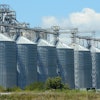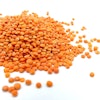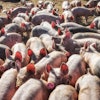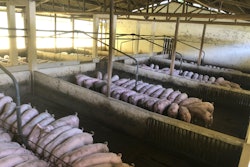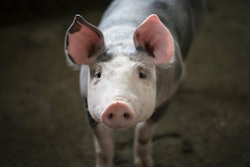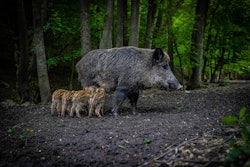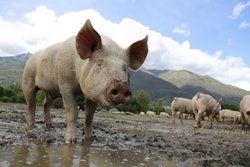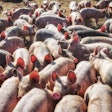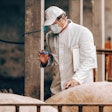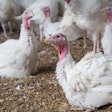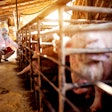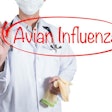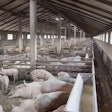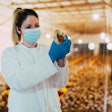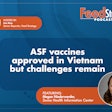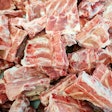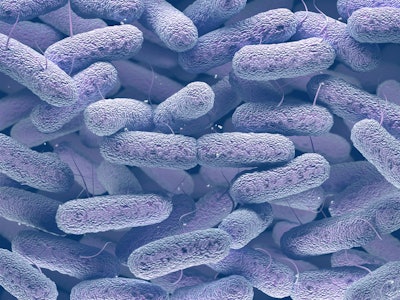
Active live yeast’s role in Salmonella control (14:21)
Ann Reus:Hello and welcome to the Feed Strategy podcast. I’m your host, Feed Strategy senior reporter Ann Reus.
Bill Potter is poultry food safety technical adviser at Elanco Animal Health. At the2023 Poultry Tech Summit, Potter will discuss the potential benefits of using active live yeast cultures in broilers, breeders and layers toreduce the incidence ofSalmonella.
Hi, Bill. Thanks for being here today.
Bill Potter:Hello, thank you for the invitation. Look forward to our discussion.
Reus:What will your talk at Poultry Tech Summit be about?
Potter:At Poultry Tech, I’m looking forward to talking about the use of active live yeast, specifically to reduceSalmonellacolonization in broilers or other poultry. I’ll be talking about a unique strain, actually, this active live yeast that appears to be having some complementary modes of action and things like pathogen reduction, bird health, other benefits. And we’re finding that while inactive yeast byproducts have been used in the U.S., in animal agriculture, for example, for a long time, this active live yeast, administered as live microorganisms, is not as common in the U.S. So that’s what I’m going to be talking about, some new data, some new applications as it relates to the USDA new emphasis on pre-harvest food safety, and maybe provide some thoughts for industry to maybe consider experimenting with this unique product.
Reus:Explain what exactly is active live yeast and what is its mode of action?
Potter:Ann, to start, I guess I have a question because I always like to get a frame of reference about what people’s background is, do you personally believe in probiotics or active organisms in human health? Is that something that’s been important to you?
Reus:I do. Yeah, I take a probiotic supplement every day.
Potter:好,很好。这帮助我理解我们的挂rsation kind of has that background. I am also a believer in human healthy supplements and probiotics and have seen the benefits of those. But, to answer your question about active live yeast, what’s its mode of action. Yeast products have been very interesting to me, studying the modes of action, I’ve been looking at these various yeast products for probably a dozen years or so now, in various forms. They all have various benefits and different modes of action. But the particular one that I’m going to talk about at Poultry Tech is a form of an active live yeast called Saccharomyces cerevisiae boulardii. Most of the early work on this has been done in Europe. It’s starting to come to the U.S.
I will have to credit Lallemand Animal Health and Elanco for some of the specifics I’m about to explain, but essentially, there’s three major modes of action in this unique active live yeast. The first mode of action, we kind of put in the bucket of microbiota balance. And the idea of this is this is an active yeast as compared to other types of yeast products that are more frequently used in the animal agriculture industry. But this is a live active yeast. And what happens is, oxygen consumption occurs in the gut, which supports the development of beneficial bacteria that actually interferes with the colonization of the undesirable bacteria. There’s this binding effect that occurs with a lot of flagellated bacteria likeSalmonellaandE. coli. If you look under a microscope, you can actually see this binding effect occurring to this this active live yeast. And this microbiota balance also creates the capacity to inhibit microbial toxin activity likeClostridiumandE. coli. So that’s kind of the first mode of action. I’d say the next mode of action we kind of call natural defense development, reinforcing the local immune system, for example, and modulation, reducing the pro-inflammatory cytokine production for example, and stimulation of antibodies such as IGA. But the one I think that’s kind of probably the most interesting to me or one of the most interesting modes of action is this improvement of gut integrity. Gut maturity is supported through use of this product and what I mean by that is, for those of you interested in in the nuances of the gut structure, it improves the villi height, the crypt depth, particularly in the duodenum and the jejunum sections, and then reinforces what we call the tight junctions, limiting permeability around these villi. If you look under a scope, you can see these proteins around these gut villi that are protected, particularly like during challenges like withE. coliinfection. So that in a nutshell is the three big modes of action: microbiota balance, which is also complemented by scavenging of oxygen; actual defense development; and then the development of gut integrity. So they can all work and complement each other.
Reus:Can you explain how those health improvements affectSalmonellacontrol?
Potter:The main thing that we know over time is that, by improving gut health, there’s a cascading set of benefits to improveSalmonellacontrol. When we attach theSalmonellaorganism to the active live yeast, it has less ability to attach to the gut. When we are depleting the oxygen in the gut from this use of this particular active probiotic, then there’s less oxygen there for the pathogen organisms to use. So all in all, it kind of works collectively and together with these modes of actions.
Reus:What is the inclusion rate for this additive in feed?
Potter:There’s various inclusion rights that can be used. A common one is a pound per ton, for example, in meat birds, others can be less, say a half pound per ton, for example, in layers and breeders in some applications. It can be included in the premix, and I’d say, usually, we feed it all the way through the life of the bird, some have experimented with feeding only in in some of the feeds. But the key thing is, whatever inclusion rate we use, we really like seeing the benefit of the active yeasts going through to the final feed, and we can do that through lab tests, post pelleting. So regardless of the inclusion rate, the good thing is we’re able to see this active live yeast in the finished feed.
Reus:什么是incorporatin的成本效益g active live yeast into poultry diets?
Potter:Ann, you’re asking the first question that we almost always get asked in any of these discussions with our nutritionists and integrators. And this is a highly, highly important question. And I’m going to answer it kind of in an indirect way: Any probiotic has to be evaluated in terms of all of its benefits in relation to cost. For example, what is the cost benefit of reducingSalmonella? What’s the benefits to improved bird health, livability improvements or decreased infections, what’s the benefits from potential feed conversion improvements, or average daily gain improvements, which has been noted in controlled research and experimental field evaluations. So you kind of have to put all this together and, I guess I encourage prospective users of this active live yeast or really any other feed additive, maybe get someone in the organization that’s good at cost accounting, look at all the factors, put it in an economic model. Look at feed utilization, bird health, In layers, you can even look at egg production, and all theSalmonellametrics we talked about earlier: rinses, you can do cloaca swabs, etc., etc. And put all that into an economic model. I think what we do find is that it’s surprising, we look at all these factors how cost effective that this unique Saccharomyces boulardii active live yeast can have for a poultry complex, particularly those, Ann, that are used to already using probiotics.
Reus:How can this strategy help meet USDA’s goals of improvingSalmonellacontrol in poultry?
Potter:Well, I’m sure that many of our listeners out there are aware thatUSDA has got these three componentsin their newSalmonellainitiative, you’ve kind of got a pre-harvest component, a processing component and a finished product standards component. They call them component one, two and three, with kind of this background emphasis that they’re having on taking a fresh look at not justSalmonellaprevalence but also quantitative loads and serotypes. So this active live yeast can impact all of these. Our controlled research and field evaluations have shown reductions inSalmonellaprevalence, particularly in the gut, where and that makes sense, it works on the internal part of the bird as I’ve talked about earlier, we see differences in the ceca, the liver, spleen, the small intestine. So the good thing is that these modes of action work also against multiple serotypes and a healthier gut and better immune responses equals lower pathogen loads. The cycle of benefits continues and continues, but also like to always mention that this is just one component of the multi-hurdle strategy, but as a probiotic, it can be a nice complementary component.
Reus:What are some other farm management practices that can improve preharvestSalmonellacontrol?
Potter:Good question. I could take a long time to answer that fully, and I have to credit our poultry veterinarians and scientists and nutritionists for already having years of work in this area. But unfortunately, I think everybody agrees, although we made significant reductions inSalmonellaat the plants, we’ve got to even make further reductions pre-harvest and in processing to meet the objectives that we’re trying to meet and actually move the needle on reducingSalmonellaillnesses. So, I like to use the term it’s a holistic 360-degree approach, which we have to use. Five of the big ones in my mind are the are the old-fashioned best management practices, water, litter, etc., etc. And the second one is intestinal integrity products, reducing disease in the gut, for example. Of course, the third one is a comprehensive vaccination program in breeders and/or meat birds, I’d say the fourth one is a good pest control biosecurity program and maybe the fifth one is what we’re talking about here today, consider including some feed additives, some probiotics, some things that can give complimentary reduction ofSalmonella. I think that the main thing on the farm is to take a continuous improvement approach, use the data to your benefit. I say the important thing is the three D’s: data drives decisions, D-D-D. So use data, be willing to use quantitative loads, as well as prevalence and serotype data, and take a long-term view of pre-harvest food safety. Pre-harvest isn’t a short-term fix, it can take some months or maybe even years to see significant reduction, but a 360-degree holistic approach is what we’re seeing is the ticket.
Reus:Have you attended Poultry Tech Summit before, and what do you hope to get out of it this year?
Potter:Well, I’ve not had the opportunity to attend yet. I’ve heard a lot of good things about it, and so I’m really looking forward to it. I’m very passionate about applying technologies to improve food safety and animal health. So I’m looking forward to hearing about any of those, particularly pre-harvest, but of course anything post-harvest as well and in the plants. I think one of the keys to any of these conferences is just the conversations in the poultry improvement world with just a continual dialogue and conversation, seeing what people are learning, what’s new out there, what’s working, what’s not working.
To use a baseball analogy, since it’s baseball season, poultry industry innovators are kind of like someone up at the plate to hit a ball. They got these fastballs coming at them and every day there’s all these challenges with poultry health and pathogens and all of that. So we’ve kind of got two choices, are we going to just watch the fastballs and see what happens or are we going to be proactive and swing the bat, so to speak? So I think the Poultry Tech Summit is all about swinging the bat and try some things and see if we can hit some home runs. And if they’re not home runs, we’ll be happy if they’re just some simple, consistent base hits, if that makes sense. So that’s kind of what I think the Poultry Tech Summit is going to mean for me, and I’m really looking forward to it.
Reus:Well, I think that’s a great way to look at it. Thank you so much, Bill, and I hope that you enjoy your first Poultry Tech Summit.
Potter:Well, thank you. It was great chatting and look forward to seeing everyone at the Summit.
Reus:Poultry Tech Summit, scheduled for November 6-8 at the Hilton Atlanta Airport in Atlanta, Georgia, will focus on the transition of innovative technologies into commercial applications to advance the poultry industry.
Registration is now open atwattglobalmedia.com. You can find alink to the registration pageon our website atFeedStrategy.comorWATTAgNet.com. Early bird savings are available until September 29.
Thanks for listening. I’m Ann Reus for Feed Strategy.

